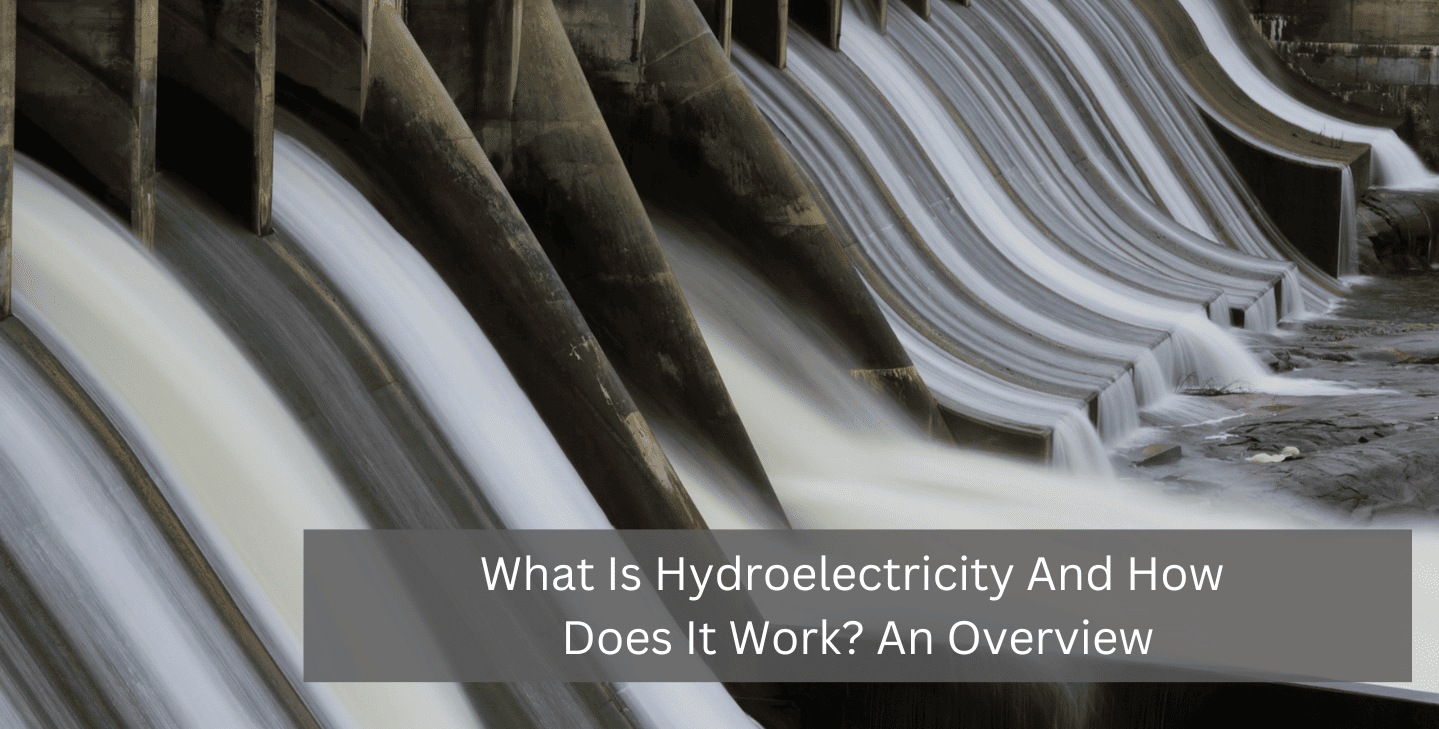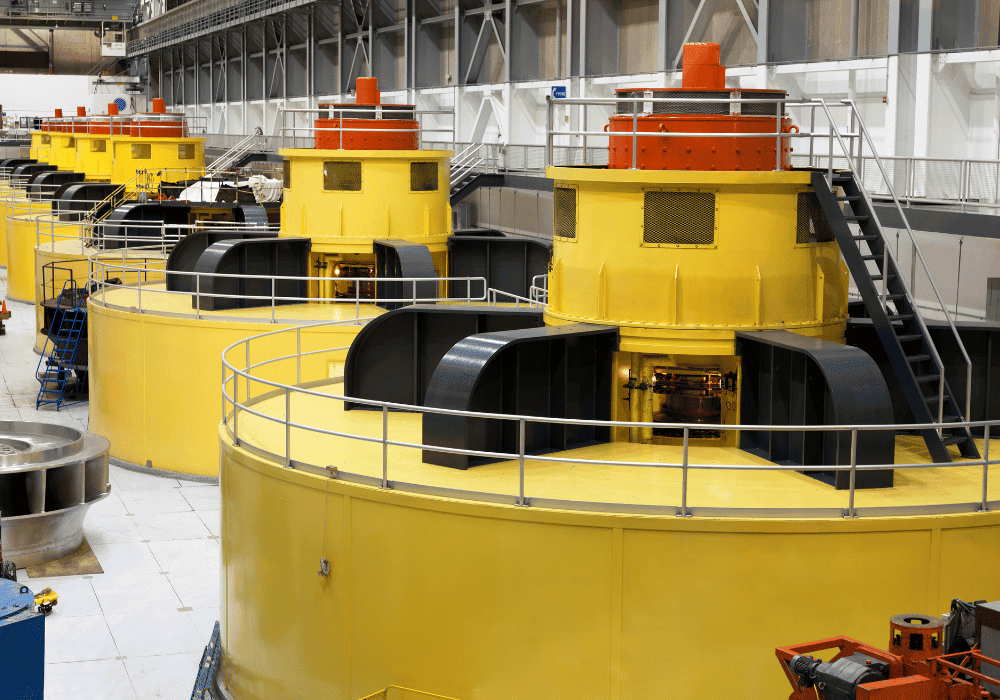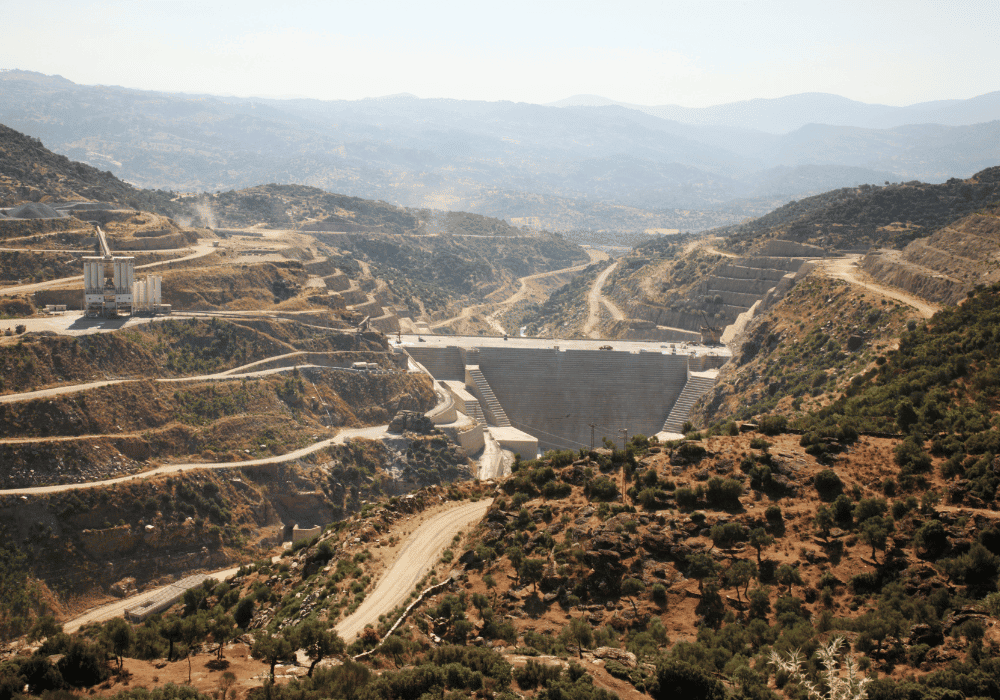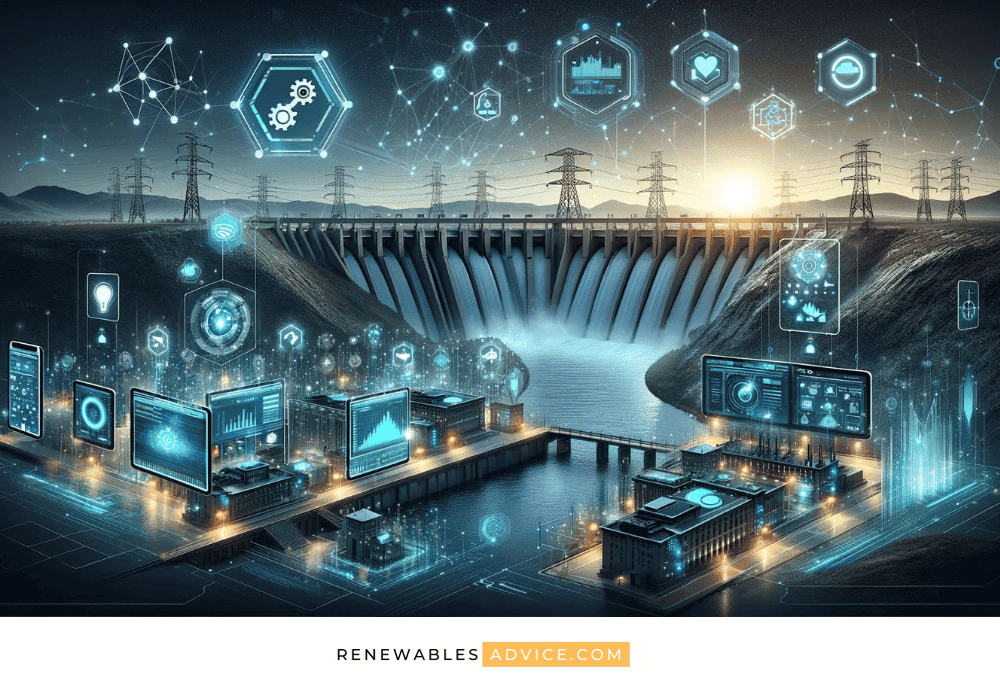What Is Hydroelectricity And How Does It Work? An Overview
What Is Hydroelectricity And How Does It Work? An Overview
What Is Hydroelectricity And How Does It Work? An Overview

To complement into exploring hydroelectricity, it's essential to recognise the intricate balance between technological innovation and environmental stewardship that defines this energy source. At the heart of hydroelectric power generation lies the dam, a pivotal device that orchestrates the volume of water necessary to drive turbines. Each power plant is a testament to human ingenuity, utilising the relentless force of water to light up our cities and homes. This form of energy generation, one of the oldest types of renewable power, continues to evolve, reflecting our growing commitment to sustainable resources and cleaner energy solutions.
Amid rising energy costs and concerns over climate change, many are seeking sustainable alternatives to fossil fuels. Hydroelectricity stands out as a renewable energy source, harnessing the power of water to illuminate our world.
This article explores the mechanics of hydroelectric power generation and its potential as a key player in our renewable energy portfolio.
Key Takeaways
- Hydropower generates electricity by converting the energy of flowing water through turbines, using dams and reservoirs to control water release.
- Low-impact hydropower is a sustainable method that reduces environmental harm while producing clean energy, offering benefits like job creation and climate change mitigation.
- Future developments in hydropower focus on improving efficiency and reducing ecological damage with new technologies such as fish-friendly turbines and real-time data analytics.
- Individuals can support hydropower growth by learning about it, voting for supportive leaders, and advocating for responsible policies while governments provide funding and incentives for research and development.
- The US Water Power Technologies Office supports advancements in hydroelectricity, promoting projects that improve the integration of this renewable source into the energy grid.
What is Hydroelectricity and How Does it Work?
Hydroelectricity harnesses the immense power of moving water to generate clean energy; an intricate process where nature’s cycle and human engineering converge. It works by:
- Harnessing Moving Water: Hydroelectricity generates electricity by capturing the kinetic energy of flowing water.
- Nature and Engineering Converge: This process combines natural water cycles with advanced engineering to produce clean energy.
- From Rivers to Power: Water from rivers and streams is directed through turbines in dams, translating its flow into electrical energy.
Now that we've explored the basics of hydroelectricity, let's examine how this technology taps into the natural rhythms of the water cycle to generate power.
How does Hydropower Utilise the Water Cycle's Kinetic Energy?
Hydropower taps into the natural movement of water within the earth's water cycle, a process powered by the sun. This cycle begins with the sun heating water in rivers, lakes, and oceans, causing it to evaporate. Water vapor then forms clouds and falls back to Earth as precipitation—rain or snow. When this precipitation collects in rivers and streams, it travels downhill towards lower elevations, driven by gravity. This journey downhill allows the water to gain kinetic energy. Hydropower plants harness this energy in a few key steps:
- Collection: Precipitation that falls on land collects in rivers and streams, providing a continuous flow of water.
- Gravity's Role: As water flows from higher to lower elevations, it gains kinetic energy due to gravity.
- Energy Conversion: At a hydropower plant, flowing water is directed through large pipes called penstocks and onto turbines. The force of the water turns the turbine blades, spinning a generator to produce electricity.
This process showcases how hydropower plants utilise the water cycle to generate clean, renewable energy, translating the flow of rivers and streams into electricity that powers our lives. By harnessing the water cycle, hydropower provides a sustainable energy solution that aligns with our growing commitment to renewable resources and cleaner energy solutions.
Understanding the water cycle's role in hydropower sets the stage for a closer look at the essential components that turn the flow of water into electricity.

Glen Canyon Dam Hydropower Turbines
What are the Key Components Involved in Converting Moving Water into Electricity?
Turning moving water into electric power is a clever process. It involves specific parts that work together to make power.
- First, we have the reservoir. This is a large lake where water gets stored before it's used for electricity.
- Next comes the dam. Dams hold back the water storage within the reservoir. They can release water when it's time to make electricity.
- Water flows from the reservoir through the penstock. This is a big pipe that carries water to the turbines.
- The turbine has blades that spin when water rushes past them. Think of it like a giant fan blown by water instead of air.
- Attached to the turbine, there's a generator. When the turbine spins, so does the generator, creating the electrical energy.
- Transformers then take this electricity and increase the voltage. Higher voltage means it can travel long distances over power lines.
- Finally, control gates manage how much water goes through the turbine. During high demand, more gates open up to produce more electricity.
Where are Europe's Hydroelectric Power Plants?
Europe's landscape is rich with rivers and lakes, making it a prime location for harnessing the power of water. From the steep Alpine valleys to the expansive northern fjords, the continent boasts some of the most significant and innovative hydroelectric power plants in the world. The map below shows some of the continent's Hydropower Plants.
What are the Environmental and Societal Concerns Surrounding Hydropower Plants?
Hydropower plants disrupt natural habitats and can harm wildlife. They often lead to the loss of biodiversity as plants, and animals lose their homes. Fish populations suffer when dams block rivers; this changes water flows and affects breeding cycles.
A team from the Stanford Natural Capital Project and Radboud University has taken a close look at how building hydropower projects affects fish homes across the globe, both from what's already happened and what might happen down the line. They shared their findings in the Proceedings of the National Academy of Sciences. The study reveals that current and future large dams significantly disrupt freshwater fish habitats worldwide. Analysing around 40,000 existing and 3,700 planned dams, researchers found that habitat connectivity for approximately 10,000 freshwater fish species is severely fragmented, especially in the United States, Europe, South Africa, India, and China. The upcoming construction of hydropower dams is expected to exacerbate fragmentation in tropical regions, threatening biodiversity and communities reliant on inland fisheries. This research highlights the urgent need for strategic hydropower planning and conservation efforts (1).
Folks who live near where they're building new power plant projects often find themselves in a tough spot. Imagine having to leave your home because a huge dam is being built nearby. This isn't just about moving to a new place; it's about watching your old neighbourhood get swallowed up by water. That's what happens when these projects take over. And it's not just homes that get affected. Important historical spots and cultural landmarks are also at risk. These places hold the stories and traditions of a community, but when a facility changes the landscape, especially around a river, those stories and traditions might be lost forever. It's like erasing a piece of history. These big changes can shake up the way a community looks, feels, and remembers its past.
In response to these concerns, the concept of low-impact hydropower emerges as a way to promote the sustainable use of our precious water resources.
Low-impact Hydropower: Promoting Sustainable Use of Resources
Low-impact hydropower represents a sustainable approach to harnessing the power of water for energy generation, focusing on minimising environmental and social impacts. Certified by the Low Impact Hydropower Institute (LIHI) based on stringent criteria, these projects prioritise the protection of environmental, recreational, historical, and cultural resources.
Unlike traditional hydropower, low-impact projects aim to produce renewable energy while ensuring river ecosystems, fish populations, and community interests are safeguarded. This approach underscores a commitment to balancing renewable energy development with ecological and social responsibility, promoting the sustainable use of our water resources.
As we consider the sustainable path forward, let's delve into the benefits that low-impact hydropower brings to the table.
What are the Benefits of Low-impact Hydropower?
Low-impact hydropower is a game-changer in sustainable energy. It harnesses moving water without causing severe harm to the environment.
- Generates clean energy: Low-impact hydro plants produce electricity by converting the flow of water into renewable power. This process does not emit greenhouse gases or pollutants, making it much cleaner than burning fossil fuels.
- Preserves local ecosystems: These plants are designed to minimise disruption to aquatic life and river habitats. They often include fish ladders and other measures to protect wildlife.
- Supports consistent energy supply: Unlike solar or wind power, low-impact hydro can generate electricity at any time, day or night, as long as the water is flowing.
- Encourages local job creation: Building and maintaining hydroelectric facilities creates jobs. Local communities benefit from employment opportunities tied to the construction and operation of these plants.
- Reduces reliance on imports: Nations can lessen their dependence on foreign oil and gas by utilising domestic water resources for energy production.
- Offers recreational opportunities: Reservoirs formed by low-impact hydropower projects can become spots for activities like fishing, swimming, and boating.
- Enhances energy security: With its dependable output, low-impact hydro contributes to a more stable and secure energy grid.
- Allows for multipurpose use of infrastructure: Dams used for generating hydropower can also provide water for irrigation and help in flood management.
- Contributes to climate change mitigation: As a non-polluting source of power, low-impact hydro plants play a role in efforts to combat global warming by lowering carbon footprints.
Recognising these benefits leads us to the next crucial question: how can we further minimize the negative impacts of hydropower on our environment and society?

Çine Dam, Turkey under construction
How can we Minimise the Negative Impacts of Hydropower on the Environment and Society?
We can minimise the negative impacts of hydropower on the environment and society by:
- Choose locations wisely for new hydropower plants. Sites should have minimal effects on local ecosystems and communities.
- Improve existing dams instead of building new ones. Upgrades can increase efficiency and reduce environmental harm.
- Develop fish passages in dams to protect aquatic life. These allow fish to migrate freely despite barriers.
- Use low-impact hydropower designs that don't require big dams. Run-of-the-river and pumped storage plants are examples.
- Monitor water quality regularly to prevent pollution. This helps maintain healthy habitats for wildlife and safe water for humans.
- Manage water flow to mimic natural river conditions. It supports ecosystems and recreational activities downstream.
- Create buffer zones around rivers to protect wildlife habitats. These areas help preserve biodiversity near hydropower projects.
- Engage with local communities before starting projects. Their input ensures that their needs are met, and cultural sites are protected.
- Plan reservoir operations to reduce greenhouse gas emissions from standing water, which occurs when organic material breaks down anaerobically.
What are the Pros and Cons of Hydropower?
Hydroelectric power, a cornerstone of renewable energy, offers a blend of sustainability and efficiency, yet it's not without its challenges. This energy source capitalises on the kinetic energy of flowing water, providing a clean, reliable form of electricity. However, the construction of hydroelectric plants, including iconic dams, introduces a complex array of environmental and economic considerations. From reducing greenhouse gas emissions and reliance on fossil fuels to the potential ecological disruptions and social impacts of dam construction, the balance between benefits and drawbacks is delicate.
For a deeper understanding check out the Pros and Cons of Hydroelectric Power. This section offers a comprehensive exploration, inviting readers to consider hydroelectricity's role in our sustainable energy future with an open mind and critical perspective.

The Future of Hydroelectricity: Innovations and Advancements
As we glide towards a sustainable future, hydroelectricity stands at the brink of transformative innovations and technological leaps. Exploring this domain unveils how emerging advancements strive to amplify hydropower's efficiency and harmony with our environment, forging paths to greener horizons.
What are Some New Technologies Being Developed to Improve Hydropower Efficiency?
The development of new technologies to improve hydropower efficiency is a multifaceted endeavour, focusing on enhancing flexibility, efficiency, environmental sustainability, and cost-effectiveness. These advancements are crucial for integrating hydropower into modern, renewable energy systems, which are increasingly reliant on variable sources like wind and solar. Here are some of the key technologies and trends in the field:
Hydropower Flexibility and Efficiency
- Variable Speed Turbines: These turbines can adjust their speed to match generation with demand, improving efficiency and grid stability. They are particularly useful for pumped storage hydropower, which acts as a battery by storing and releasing energy as needed.
- Generators with Current-Controlled Rotors: This technology allows for better control of generator output, enhancing the flexibility and efficiency of hydropower plants during start and stop phases. An example is the Frades II plant in Portugal, which uses pump turbines with an AC-excitation system.
- Modular Hydropower: Modular systems are designed for easy integration into existing waterways, reducing installation costs and environmental impacts. They can be particularly beneficial for retrofitting non-powered dams and exploiting untapped sites.
Environmental and Social Sustainability
- Fish-Friendly Technologies: Innovations like fish ladders and turbines designed to minimise harm to aquatic life are being developed to address the ecological impacts of hydropower plants.
- Small-Scale Hydropower: Smaller, more eco-friendly hydropower solutions are being explored for their lower environmental footprint and potential for rural electrification. These include novel designs of gravity hydraulic machines and turbines.
Digitalisation and Advanced Materials
- Hydropower Digitalisation: The use of digital technologies and advanced analytics is improving the operation, maintenance, and efficiency of hydropower plants. This includes real-time monitoring systems and predictive maintenance tools.
- Advanced Materials and Manufacturing Techniques: Research is ongoing into new materials and manufacturing processes that can extend the lifespan of hydropower components, reduce maintenance costs, and improve overall efficiency.
Energy Storage and Integration
- Pumped Storage Hydropower (PSH): Innovations in Pumped Storage Hydropower are making it more cost-effective and feasible in a wider range of locations. This includes systems that use underground water sources or are designed to be more modular.
- Integration with Renewable Energy Systems: Technologies are being developed to enhance the ability of hydropower to work in conjunction with other renewable energy sources, providing grid stability and storage solutions to accommodate the variability of wind and solar power.
Looking Ahead
The future of hydropower technology is geared towards making hydropower plants more adaptable, efficient, and environmentally friendly. The study "Analysis of emerging technologies in the hydropower sector" reviews advancements in hydropower technology, focusing on energy storage, digitalisation, and eco-friendly solutions. It emphasises the need for updating old facilities with modern technologies to enhance efficiency and reduce environmental impacts. Key findings include the potential of variable speed generation and hybrid systems to address the variability of renewable energy sources. The research highlights innovative approaches to increase hydraulic turbines' operational flexibility, showcasing the critical role of technological progress in the sustainable evolution of hydropower. [2]
By focusing on innovations in turbine technology, materials science, digitalization, and environmental sustainability, the sector aims to maintain and enhance its role in the global transition to renewable energy. These technologies not only promise to improve the performance and reduce the environmental impact of hydropower but also to enable its integration into a more flexible and sustainable energy system.
With new technologies at our disposal, the next step is to consider how we can continue to harness the power of moving water in a way that's sustainable for generations to come.
How can we Continue to Harness the Power of Moving Water Sustainably?
Building on new technologies, we can keep improving how we use moving water. To do this sustainably, it's important to consider the full life cycle of hydropower projects. We should focus on designs that reduce harm to fish and other wildlife.
This means creating passages for fish and using turbines that are safer for them.
We must also balance water use needs for energy with those of agriculture and drinking supplies. Using pumped storage systems smartly helps us manage our resources better. By storing power in water during low-demand times, we can supply electricity when people need it most without wasting water.
Emrgy Inc., backed by the U.S. Department of Energy, shows us another path forward by adapting existing waterways for power generation without building large dams. This method is less disruptive to the environment and communities.
Each step towards more efficient and thoughtful hydropower brings us closer to a future where clean energy flows from every river, benefiting all while respecting our planet. Sustainable practices in hydropower not only protect our environment but also play a pivotal role in meeting global clean energy goals.
How Does Hydropower Contribute to Meeting Clean Energy Goals?
Hydropower plays a crucial role in the clean energy mix. It harnesses the power of water to generate electricity without emitting greenhouse gases. Water released from dams flows through turbines.
These turbines spin, generating electricity that powers homes and industries.
Using hydropower helps countries cut their reliance on fossil fuels like coal and oil. This shift reduces air pollution and combats climate change. Hydropower is renewable because it uses the water cycle's natural flow—rainfall, river currents, and stored water in reservoirs all get turned into energy over and over again.
Advances in technology make this process more efficient year after year.
Clean energy goals become more achievable with hydropower's growth. Innovations continue to emerge, such as those recognised by the Water Power Technologies Office H2O's Prize winners.
They upgrade our ability to produce hydroelectricity safely and sustainably for future generations. As we recognise hydropower's contribution to clean energy, it's time to consider the actions that individuals and governments can take to support its growth.
What can Individuals and Governments do to Support the Growth of Hydropower?
Hydropower plays a vital role in providing clean energy. Both individuals and governments have the power to boost its growth.
- Learn about hydroelectric energy and share information with others.
- Vote for leaders who support renewable energy technologies, including hydropower.
- Encourage local communities to explore the potential for smaller hydropower plants.
- Support companies that invest in sustainable hydroelectric systems.
- Governments can offer tax incentives to encourage hydroelectric plant development.
- Create policies that ensure the responsible use of dam and river systems.
- Fund research into low-impact and pumped-storage hydropower solutions.
- Educate the public on the benefits of hydroelectricity generation over nuclear power or fossil fuels.
- Invest in grid infrastructure to better integrate electricity from hydroelectric power plants.
- Partner with private sectors to modernise old hydroelectric dams for better efficiency.
Supporting hydropower requires dispelling myths and understanding the facts, which is essential for informed decision-making and public support.
Hydroelectricity Myths vs. Facts
Hydroelectricity like most renewable energy sources comes with some myths. Here's the facts regarding this power source:
Myth: Hydropower doesn't harm the environment at all.
Fact: Although hydropower is cleaner compared to burning fossil fuels, it's not completely free of environmental impacts. Building dams can change natural water paths, harm fish and wildlife, and upset local ecosystems. But, with careful planning and new technologies like fish ladders and setting minimum water flow levels, we can lessen these impacts.
Myth: You can't store hydropower for later.
Fact: Actually, hydropower has the ability to store energy. This is done through pumped storage, where water is moved to a higher reservoir when demand is low and then released to generate electricity when demand is high, effectively storing energy for future use.
Myth: All hydropower plants are huge and mess up large areas.
Fact: Hydropower plants come in all sizes, including small and micro ones that don't have as big of an environmental footprint. These smaller setups often don't need big dams and can fit into existing waterways more easily, causing less disruption.
Myth: Hydropower isn't reliable or steady.
Fact: Hydropower is one of the most dependable and steady renewable energy sources. Thanks to reservoirs, water flow can be managed, allowing for steady electricity production. Plus, hydro plants can quickly respond to electricity demand changes, making it a stable energy source.
Myth: It's always extremely expensive to build hydropower plants.
Fact: While starting a hydropower plant can be pricey, these facilities usually last a long time and have very low running and maintenance costs. Over time, the cost of producing electricity with hydropower can compete with other energy sources, especially when you consider the long-term savings and the stability of using water as a fuel source.
Myth: Hydropower is bad for all fish and aquatic life.
Fact: While it's true that hydropower plants can affect water ecosystems, modern plants are being designed with features to lessen harm. For example, fish ladders and bypass systems let fish move around dams, and new turbine designs are more fish-friendly, reducing harm to aquatic life.
Conclusion: The Importance of Renewable Energy Sources Like Hydropower
In the quest for a cleaner, greener future, the role of renewable energy sources becomes increasingly pivotal. Hydropower stands as an exemplar of this shift—offering a potent blend of sustainability and reliability to meet the world's burgeoning electricity needs.
By harnessing the natural force of water, hydroelectric facilities offer a clean, reliable way to meet our energy needs without depleting precious resources. The role of the dam in controlling water flow and the power plant in converting this flow into electricity cannot be overstated. As we look to the future, the importance of investing in and improving hydropower technology is undeniable. By focusing on innovative designs and minimising environmental impacts, we can ensure that hydropower remains a cornerstone of our energy portfolio. This journey through the mechanics and benefits of hydroelectricity underscores its potential not just as a power source, but as a force for positive change in our quest for a more sustainable world.
Reference List
(1) 'Impacts of current and future large dams on the geographic range connectivity of freshwater fish worldwide' by Valerio Barbarossa, Rafael J. P. Schmitt, Mark A. J. Huijbregts, and Aafke M. Schipper is licensed under CC BY 4.0 DEED.
No changes were made to the material.
---------
(2) 'Analysis of emerging technologies in the hydropower sector' by Ioannis Kougias , George Aggidis , François Avellan , Sabri Deniz , Urban Lundin , Alberto Moro , Sebastian Muntean , Daniele Novara , Juan Ignacio Pérez-Díaz , Emanuele Quarantai, Philippe Schild , Nicolaos Theodossiou is licensed under CC BY 4.0 DEED.
No changes were made to the material.
